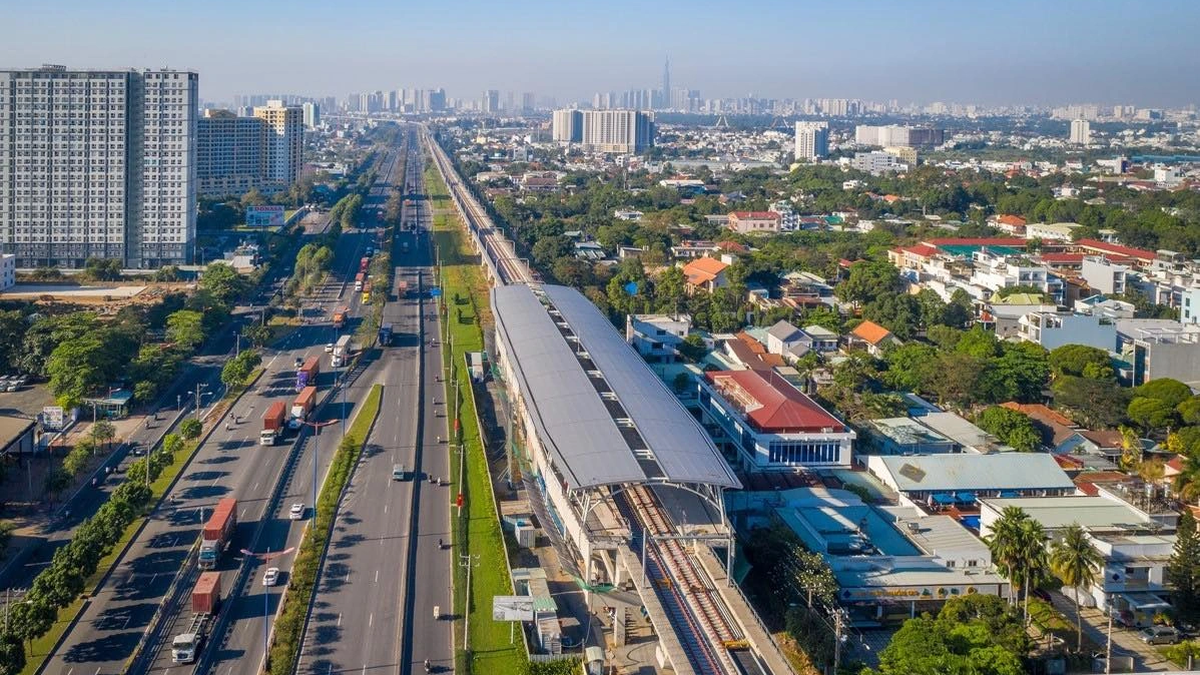Bad debt tends to increase
According to data from the Institute of Training and Research, Joint Stock Commercial Bank for Investment and Development of Vietnam ( BIDV ), the bad debt of 27 listed banks at the end of the first quarter of 2025 was at 2.2%, up from 1.9% at the end of 2024 (group 5 debt - debt with the possibility of losing capital accounted for 1.25% of total outstanding loans, up 10.7% compared to the end of 2024). Meanwhile, the bad debt coverage ratio decreased from 91% at the end of 2024 to 80% at the end of the first quarter of 2025, also showing that the ability to compensate for risks of banks is declining.
Dr. Nguyen Thanh Nam, Permanent Vice President and General Secretary of the Vietnam Commercial and Investment Arbitration Center (VTIAC), commented: “The increase in bad debt of banks is an inevitable trend when considering a number of domestic factors and fluctuations in the world economy in recent times. Consumers are tending to tighten spending and many businesses are currently facing difficulties in business due to a decrease in consumption of goods. It is worth noting that recently, the cash flow into real estate has increased sharply as banks have loosened real estate lending to maintain growth. Although this has brought good profits to banks, it also poses many risks because real estate prices have increased sharply in recent times. Specifically, some private joint stock commercial banks have seen a sharp increase in bad debt ratio in the first 6 months of the year such as SaigonBank, VIB , PGBank...”.
Talking to reporters, financial-banking expert Dr. Nguyen Tri Hieu commented: “Bad debt is on the rise. If we add off-balance sheet bad debt (handled by setting aside risk provisions and monitoring off the balance sheet) and debt sold to the Vietnam Asset Management Company (VAMC), the bad debt of the entire banking sector is much higher than the published figures. The reason for this situation is that the Vietnamese economy is highly open and vulnerable to global fluctuations, typically the US tariff policy. In the first 6 months of 2025, the number of businesses temporarily suspending business and dissolving remained high. On average, about 21,000 businesses withdrew from the market each month, contributing to the increase in the bad debt ratio.”

Besides, experts also said that the cause of bad debt is due to the prolonged impact of the pandemic. Covid-19, damage caused by storm No. 3 in 2024 (storm Yagi), the end of the debt deferral policy according to Circular No. 02/2023/TT-NHNN and especially the legal gap after Resolution No. 42/2017/QH14 of the National Assembly expires at the end of 2023.
Building an early warning system
In light of the above situation, on June 27, 2025, the Law amending and supplementing a number of articles of the Law on Credit Institutions was passed by the 15th National Assembly at its 9th Session. Basically, the law has restored to credit institutions the right to seize collateral assets, which was previously stipulated in Resolution No. 42/2017/QH14 dated June 21, 2017 on piloting the handling of bad debts of credit institutions, which is considered an effective tool to support credit institutions in handling bad debts. “By legalizing this regulation, the State has helped credit institutions in general and banks in particular have an additional effective tool to quickly resolve bad debts, especially helping credit institutions save time and costs in handling bad debts by reducing the number of cases that have to be brought to court for settlement. For those reasons, I believe that this new regulation will be a good tool to support credit institutions to speed up the process of handling bad debts in the future,” emphasized Dr. and lawyer Nguyen Thanh Nam.
Dr. Nguyen Tri Hieu said: “The Law amending and supplementing a number of articles of the Law on Credit Institutions replaces part of Resolution No. 42/2017/QH14, but it still cannot completely replace it. Bad debt is forecast to continue to increase in the last two quarters of 2025. Strong credit growth (expected to reach the target of 16%) in the context of businesses still facing many difficulties will push bad debt up. Although banks have a risk provision coverage ratio, this is only a way to account for costs arising from forecasting bad debt to reduce profits through increasing provision costs. Risk provisions only work on the books, not a fund with real cash flow for us to handle when bad debt becomes real damage”.
To prevent the bad debt ratio from increasing, Dr. and lawyer Nguyen Thanh Nam noted that credit institutions need to pay attention to risk management, build an early warning system, and prevent new bad debts from arising. Bad debt handling needs to be done from the root, that is, from the stage of building credit products, orienting credit portfolios, and managing risks, because debt handling is always the last step. Regularly review and update the terms in the credit contract form, the security contract form in accordance with the provisions of law, as well as add provisions on seizing secured assets to the security contract form to serve as a basis for seizing secured assets according to new regulations. Credit institutions need to issue bad debt handling procedures and internal regulations on each debt handling measure to have tools to handle bad debts in accordance with the provisions of law. Have a specific plan and action plan for each bad debt to ensure effectiveness, in accordance with the customer's situation, debt status, and secured assets.
Another effective measure to prevent bad debt is for banks to establish cooperative relationships with reputable commercial arbitration centers to create a mechanism for quick dispute resolution, shortening the time to handle bad debt. This is also a trend that credit institutions are applying to resolve bad debt without going through court proceedings, which often take more time. Dr. Nguyen Tri Hieu recommends that, in order to limit bad debt arising in the last two quarters of 2025, banks need to make data on on-balance sheet and off-balance sheet bad debt transparent; comply with risk prevention measures according to Basel III standards. Commercial banks need to comply more with the law, especially the regulations of the State Bank of Vietnam in the credit appraisal process. In particular, with two areas that have very high potential risks when lending, real estate and securities, banks need to be extremely cautious when implementing credit policies.
It can be said that restoring the right to seize collateral is both an effective debt settlement mechanism and contributes to raising awareness and responsibility for debt repayment of borrowers. However, this is only the last resort to overcome bad debt, because seizing collateral can lead to many consequences. To prevent bad debt from the root, each bank officer must ensure transparency, seriousness, and no fraud when performing credit activities. Borrowers must also have the awareness to cooperate in debt repayment, avoiding procrastination and evasion of financial obligations. Only then will credit relations bring real efficiency to businesses, contributing to the socio-economic development of the country.
Source: https://baolangson.vn/tao-co-che-thuan-loi-trong-xu-ly-no-xau-5054033.html






























![[Photo] Signing of cooperation between ministries, branches and localities of Vietnam and Senegal](https://vphoto.vietnam.vn/thumb/1200x675/vietnam/resource/IMAGE/2025/7/24/6147c654b0ae4f2793188e982e272651)








































































Comment (0)